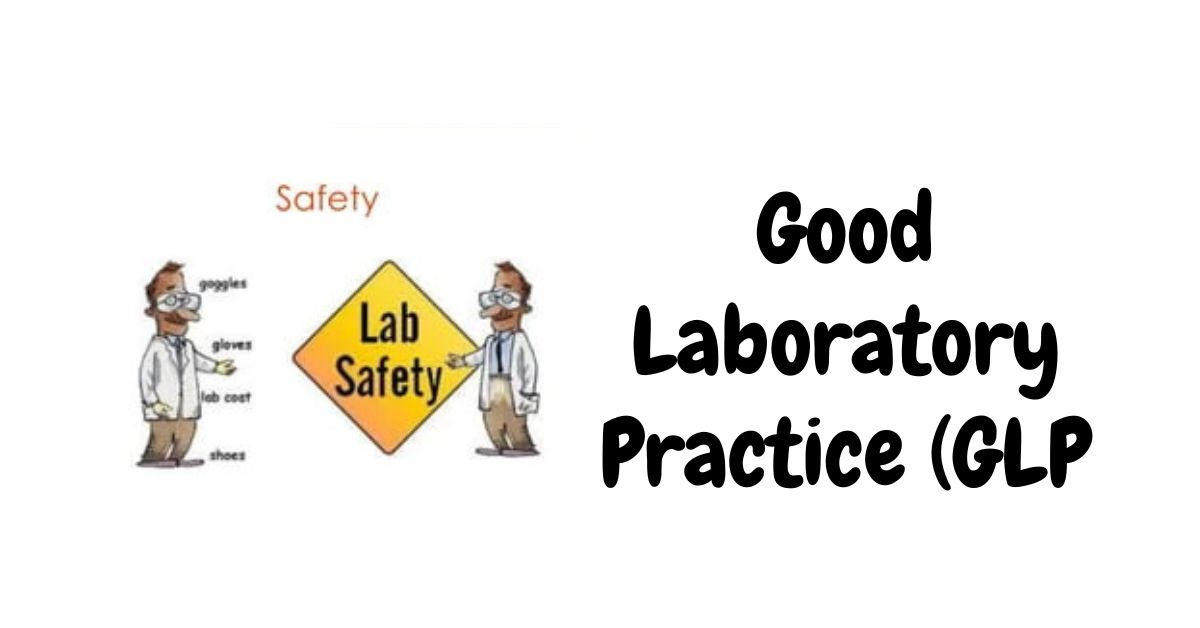Good laboratory practice (GLP) is a vast term and seems virtually impossible to find a definition. The term is used very frequently covering each aspect of laboratory operation, regardless of major or minor, including Safety, quality, and the ultimate goal of the laboratory.
Good Laboratory Practice For Microbiology Laboratory
- To reduce the accumulation of dust and to facilitate cleaning, there should be no place leftover without cleaning and a minimum of projecting ledges, shelves, cupboards, and equipment.
- Dispensing culture media and other consumables shall be in a good manner to minimize the dust proliferation
- In general, the objective of good microbiological practice is to-
- Prevent contamination of laboratory workers and the environment
- Prevent contamination of the experiment/samples
- Good laboratory practice in a microbiology laboratory consists of activities that depend on several principles
- Controlling the environment with hygiene and aseptic techniques.
- Control of media, reagents, and test strain
- Control of equipment, Calibration, and intermittent checks
- Diligent Recording and evaluation of data
- The first step towards adopting Good Laboratory Practice is reading and following each content of Standard operating procedures & Standard analytical methods thoroughly.
- The second step of adopting good laboratory practice is to maintain environmental bio-burden to a minimum.
- To limit the bio-burden of the environment to its minimum, maintain housekeeping, fumigations, and appropriate gowning
- Temperature and relative humidity play a keen role in controlling the bioburden of the environment. Keep a record of the temperature and humidity of the Laboratory on daily basis. Temperature of lab should be 20°C ± 5°C and humidity should be 50% ± 20%
- A third major aspect of good laboratory practice is to maintain and all the equipment as per their SOPs, practice preventive maintenance program, keep intermittent check records, strict adherence to the procedure to protect the equipment from intentional or unintentional deviations that can affect the validity of results, avoid mishandling or overloading, make alert system when their calibration is due and get them calibrated externally from an authorized party.
- The most important part of good laboratory practice of microbiology laboratory is to follow ultimate hygiene and safety. Before beginning any procedure involving microorganisms it is of utmost importance to be aware of potential hazards, one must have a thorough knowledge of the characteristics of the agents being handled
- In addition, personnel must be trained and proficient in the practices and techniques required for handling such material safely
- Laboratory staff will not indulge in eating or any hand-to-mouth operations such as moistening of labels with tongue, nail-biting, or putting pencils, pens, or fingers in the mouth. Talking in the lab area should be restricted to a bare minimum
- Follow the SOP for safety measures. Wash hands prior to and after completion of analysis/ handling cultures or enriched medium. Mouth pipetting is prohibited. Disinfect work surfaces with a suitable disinfectant before & after work. Keep the bench top uncluttered and minimize traffic and unnecessary movements around the work area (movement can stir up air currents which can carry contaminants into the work area).
- All work with infectious material should be carried out in a biosafety cabinet and the material should not be carried throughout or out of the lab unless in a closed or capped container. Take all precautions to avoid cross-contamination.
- Wear protective gowning while working i.e. closed Shoes, eye protection, lab coat, and gloves. Long hair must be tied back. Maintain personal hygiene. Keep your nails clean and short.
- Drinking, eating/chewing gum, application of cosmetics or lip balm, and handling contact lenses in the lab are not allowed. Avoid touching the face, eye, and other direct routes of exposure including open wounds
Conclusion
In Microbiology Laboratory, Good Laboratory Practice (GLP) is a very important principle to minimize the risk of errors and ensure that the results are consistent and credible. It also focuses on the Lab Personal Safety, Sample, and Environmental safety. GLP is imperative that all microbiologists adhere to Good Laboratory Practices in their work
